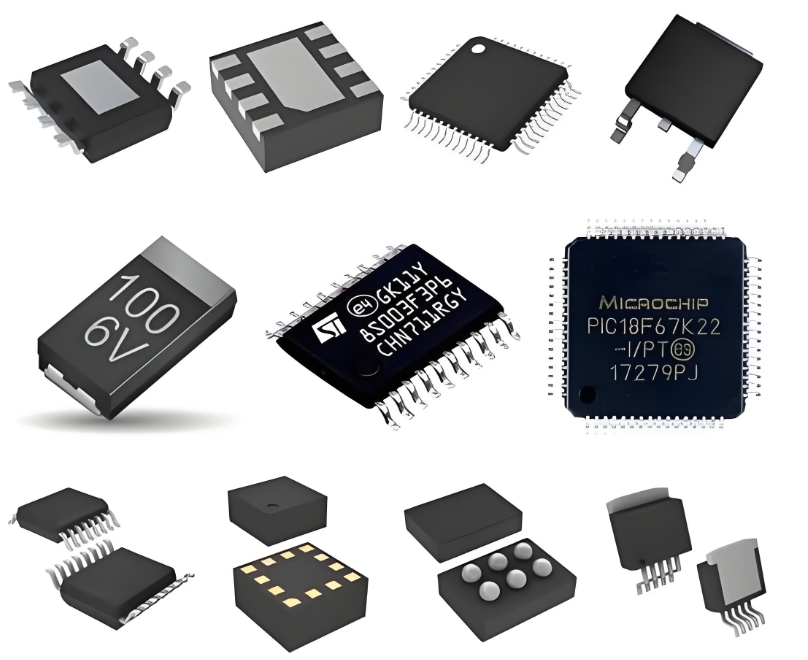**The ADXL325BCPZ: A Comprehensive Guide to the Low-Power, 3-Axis MEMS Accelerometer**
In the rapidly evolving world of electronics, the ability to measure acceleration, tilt, and motion is fundamental to countless applications. At the heart of many of these systems lies a key component: the MEMS accelerometer. Among the various options available, the **ADXL325BCPZ from Analog Devices** stands out as a particularly versatile and efficient solution. This integrated circuit is a low-power, complete 3-axis acceleration sensor that has become a cornerstone for designers working on power-sensitive and space-constrained projects.
**Unpacking the ADXL325BCPZ: Core Features and Specifications**
The ADXL325BCPZ is a low-g accelerometer capable of measuring acceleration with a full-scale range of ±3g. This range is ideally suited for a vast array of applications, from measuring tilt to detecting motion and shock. Its architecture is based on a sophisticated **MEMS (Micro-Electro-Mechanical Systems)** technology, where a microscopic structure deflects in response to acceleration forces. This deflection causes a change in capacitance, which is then converted into an analog voltage output proportional to the acceleration.
One of the most compelling attributes of this device is its remarkably **low power consumption**. Operating typically at 350 μA, it is engineered for battery-powered devices that demand long operational life. Furthermore, it includes a **sleep mode** that reduces consumption to a mere 0.1 μA, making it an excellent choice for applications that spend significant time in a standby state.
The accelerometer provides three separate analog output voltages (X, Y, and Z), allowing a microcontroller to simultaneously monitor acceleration in all three spatial axes. The device is also equipped with user-selectable bandwidths, which can be set via capacitors on the X, Y, and Z outputs. This allows designers to tailor the sensor's response to the specific needs of their application, optimizing the signal-to-noise ratio for either slow-moving or high-frequency vibrations.
**Key Applications: Where the ADXL325BCPZ Excels**
The combination of its 3-axis sensing, low power, and small form factor opens the door to a diverse set of use cases:
* **Consumer Electronics:** It is perfect for **mobile device orientation** detection (portrait/landscape switching), gaming controllers, and advanced pedometers.
* **Industrial Instrumentation:** Used for **tilt sensing** in construction equipment, platform leveling, and as a vibration sensor for predictive maintenance in machinery.

* **Internet of Things (IoT):** Its low-power characteristics make it ideal for wireless sensor nodes that monitor motion or vibration and transmit data sporadically to conserve energy.
* **Medical Devices:** Employed in portable medical equipment for activity monitoring and ambulatory status detection.
**Design Considerations and Integration**
Integrating the ADXL325BCPZ into a design is relatively straightforward. The primary requirement is to provide a stable power supply, typically 3.3V, and to correctly size the external capacitors on the output pins to set the desired bandwidth. Designers must also pay careful attention to PCB layout, ensuring clean power rails and proper decoupling to minimize noise on the analog outputs. The signals are typically routed directly to the analog-to-digital converter (ADC) inputs of a host microcontroller for processing.
**ICGOODFIND**
The **ADXL325BCPZ** establishes itself as a highly reliable and efficient solution for 3-axis motion sensing. Its standout **low-power operation** and flexible bandwidth selection make it a superior choice for designers tackling the challenges of modern, power-conscious electronic devices across consumer, industrial, and IoT markets.
**Keywords:**
1. **MEMS Accelerometer**
2. **Low-Power**
3. **3-Axis Sensing**
4. **Analog Output**
5. **Tilt Sensing**
